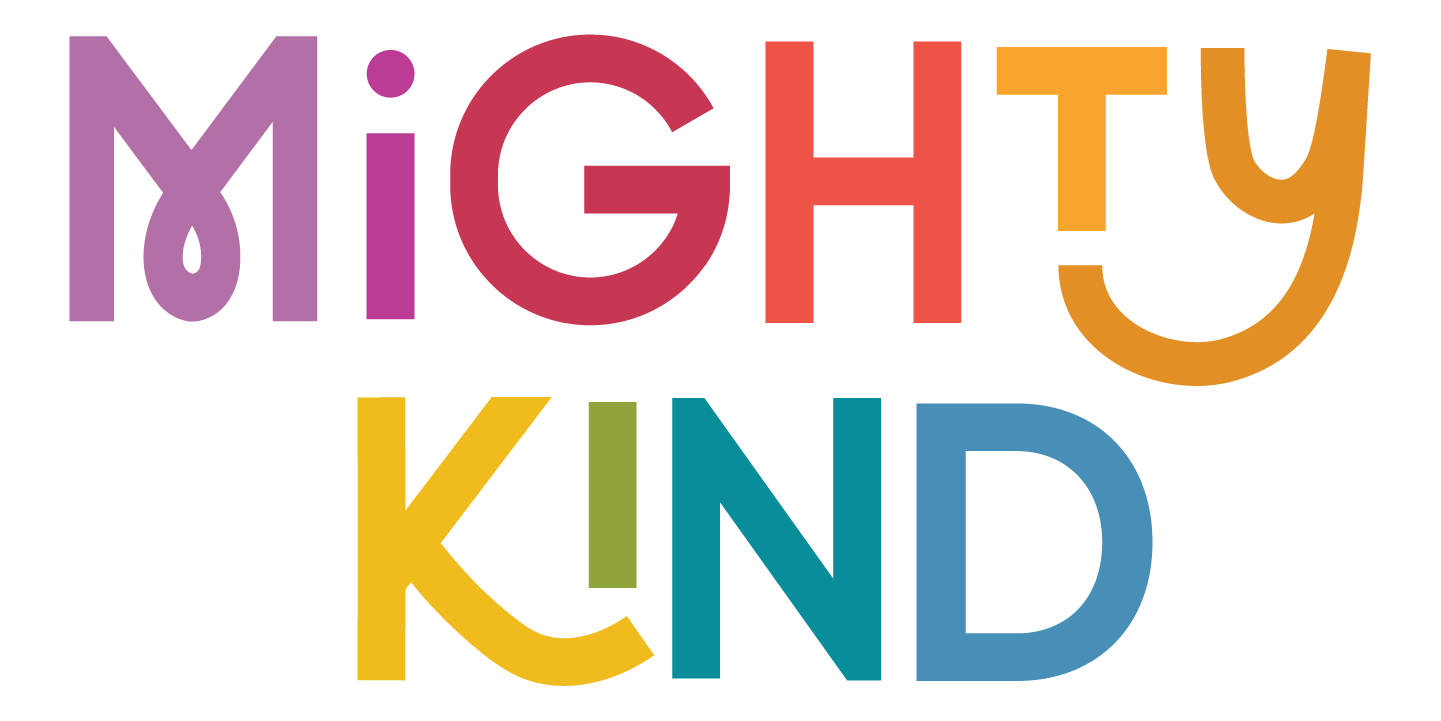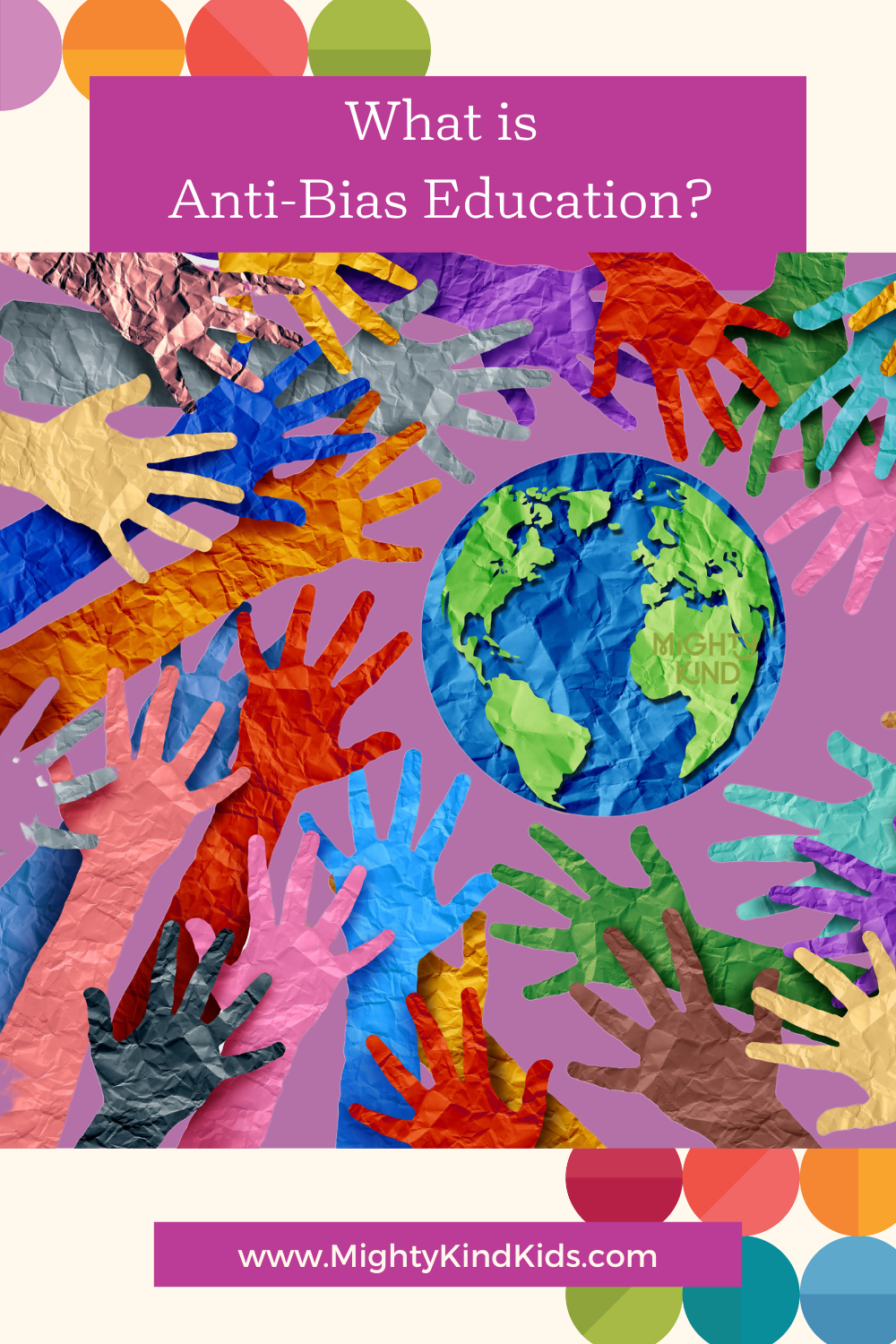Why We Celebrate Anti-Bias Education
Anti-bias education is a critical tool in helping children become well-rounded, empathetic members of society. Primary schools everywhere are beginning to implement anti-bias goals into their curriculum in the form of weekly discussions, daily affirmations, more diverse libraries, and much more.
At Mighty Kind, we know how important it is to understand the harmful effects of bias, and to teach our children about equity and inclusivity. Anti-bias education is not only important for children, it helps us be better advocates as their caregivers as well.
Bias: Conscious vs. Unconscious
Culturally speaking, bias is an inclination to avoid (or lean toward) something or someone, based on learned experiences, stereotypes, and an individual’s upbringing. Some biases are apparent and involve conscious decision making, while others are implicit and ingrained deep into our subconscious.
As adults, we experience bias all the time. A CEO with a bias against women might consciously favor men to receive career advancements. A mother in a playgroup with a bias against the LGBTQ+ community might exclude a queer mother from an activity.
For children, bias could involve actively picking on peers of different racial backgrounds based on stereotypes they’ve learned at home.
On the other hand, implicit bias drives decision making on a more unconscious level. You might instinctively lock your car door when a person experiencing homelessness walks by. In a classroom setting, children might exclude a classmate with disabilities from playtime simply because they’re not used to interacting with visible differences.
Whether conscious or unconscious, negative biases like these can be harmful, and require change. This is where anti-bias education comes in.
How Anti-Bias Learning Helps
An important thing to remember is that everyone has biases. No matter where you come from, or how dedicated you are to equality, you possess bias in some shape or form. Anti-bias education is about identifying biases that are damaging, addressing them head-on, and learning to adjust.
But more than anything, anti-bias education is a preventative measure. It instills respect for others in children, so that harmful biases don’t have a chance to form in the first place.
The National Association for the Education of Young Children (NAEYC) states that the four goals of anti-bias education are:
Identity
Diversity
Justice
Activism
As children gain a strong understanding of who they are (identity), what background their peers come from (diversity), and the hurt that comes from being treated unfairly (justice), they can take steps toward speaking up against injustices, and creating safe spaces (activism).
How Anti-Bias and Anti-Racist Education Work Together
Anti-bias education and anti-racist education (ABAR) often go hand-in-hand, because biases are often racial in nature. If children can learn about other cultures and races from a young age, the hope is that they will be able to avoid harmful biases, especially around race.
However, finding a balance can be tricky at times. Teaching Tolerance reminds educators to avoid focusing solely on stories of racial trauma or injustice when incorporating ABAR education into a curriculum. This can trigger a savior mentality and instill pity for a group of people, which doesn’t encourage unity, but reinforces the ideas of superiority and inferiority.
ABAR education encourages children to recognize differences and similarities between races, and to have open discussions about fairness. If a racial dispute occurs at school, NAEYC urges teachers to “intervene gently but firmly, support the child who is the target of the biased behavior, and help both children learn other ways of interacting.”
How You Can Encourage Anti-Bias Learning at Home
At home, you have the awesome responsibility of being a child’s primary source for ABAR information. As caregivers, there are several things we can do to help reinforce anti-bias education.
1. Be an example
Show the children in your life you value diversity by consuming diverse media, befriending people of all backgrounds, and by speaking about others in a kind and respectful manner.
2. Censor yourself
Children absorb everything we say, along with our tone of voice, mannerisms, and moods. If you catch yourself generalizing a group of people, or speaking negatively about a specific race or marginalized group, stop yourself and correct course.
3. Invest in educational materials
At Mighty Kind Kids we pride ourselves on being a helpful resource for both children and adults. Our legacy magazine is centered on anti-bias and anti-racist ideals, and is the perfect supplement to what children may be learning already in school. There are many other resources and materials that can aid in home learning and unlearning.
Overall, anti-bias education is a critical development in the world of learning today. By instilling confidence, culture, understanding, and a solid sense of justice in children, they will lead the next generation against bias, stereotyping, and prejudice. Anti-bias education is an investment for the future.


